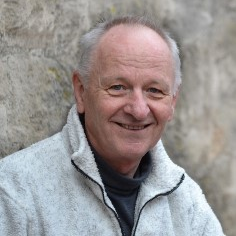Topic Editors


Advances in Hydrogeological Research
Topic Information
Dear Colleagues,
Advances in hydrogeological research can lead to the better management of water resources and identify a roadmap to address future challenges. The hydrogeologist community has developed interdisciplinary approaches in terms of concepts, models, and techniques as well as tools at different scales (from the laboratory to the field). The aim is to highlight isotope methods, qualitative and quantitative models, vulnerability, adsorption–desorption, diffusion mechanisms, fractionation, analytical development, emerging contaminants, nanoparticles, nanoplastics, colloids, aquatic ecology, remediation, treatment, climate impacts, etc. Our goal is to repair or propose state-of-the-art technologies based on interdisciplinary and multidisciplinary hydrogeological approaches.
Prof. Dr. Karl Auerswald
Prof. Dr. Jordan Clark
Topic Editors
Keywords
- hydrology
- groundwater
- soil erosion
- water resource management
- hydrogeology
- surface waters
- stable isotopes
Participating Journals
| Journal Name | Impact Factor | CiteScore | Launched Year | First Decision (median) | APC | |
|---|---|---|---|---|---|---|

Geosciences
|
2.7 | 5.2 | 2011 | 23.6 Days | CHF 1800 | Submit |

Hydrology
|
3.2 | 4.1 | 2014 | 17.8 Days | CHF 1800 | Submit |

Remote Sensing
|
5.0 | 7.9 | 2009 | 23 Days | CHF 2700 | Submit |

Sustainability
|
3.9 | 5.8 | 2009 | 18.8 Days | CHF 2400 | Submit |

Water
|
3.4 | 5.5 | 2009 | 16.5 Days | CHF 2600 | Submit |

MDPI Topics is cooperating with Preprints.org and has built a direct connection between MDPI journals and Preprints.org. Authors are encouraged to enjoy the benefits by posting a preprint at Preprints.org prior to publication:
- Immediately share your ideas ahead of publication and establish your research priority;
- Protect your idea from being stolen with this time-stamped preprint article;
- Enhance the exposure and impact of your research;
- Receive feedback from your peers in advance;
- Have it indexed in Web of Science (Preprint Citation Index), Google Scholar, Crossref, SHARE, PrePubMed, Scilit and Europe PMC.

